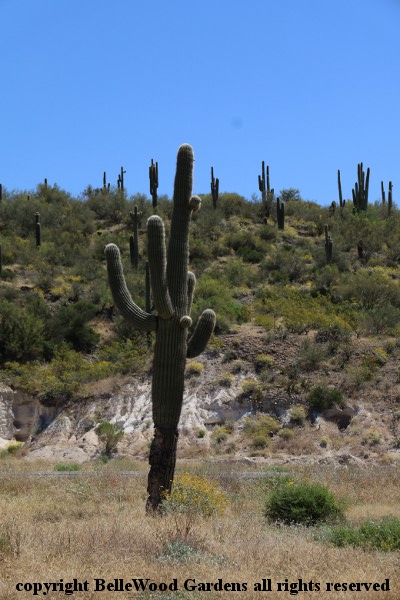
And there are saguaro, standing like sentinels along the highway.
.
12 through 22 April 2019
Cacti in the Red Rock Country of Sedona, Arizona
Arriving in Phoenix on Friday, 12 April. Shuttle over to the car rental area and pick up our mini-van. Get on the highway heading north, for Sedona. It will be about a 2-hour drive.

And there are saguaro, standing like sentinels along the highway.
We're driving. No stopping. We keep passing very impressive saguaro with multiple arms, and they must be 75 years old before they start to branch. Another day, they tell me. Which turns out to be a week and a half later, on our way back to Phoenix for the return home on Sunday, 21 April. But there will be many, many cacti before then.
Note: I have decided to group these entries by genus, rather than when photographed.

For example, several Cylindropuntia versicolor, staghorn cholla,
right where we are staying at an AirB&B on Copper Cliffs Lane.

Fruit is yellowish or purplish green when ripe but I found no mention of edibility.

Deceptively fuzzy, Cylindropuntia biglovii has the common name of teddy bear cholla.
Do not be deceived, the dense mat of strongly barbed spines break off on whatever
brushes against them. 21 April 2019, Rte 17 S, approximately 50 miles from Phoenix.

Cylindropuntia spinosior is aptly given the common name of cane cholla.

We found this at the Sedona Botanical Garden, all quarter-acre of it.
15 April 2019, SW corner intersection of Highway 89A and Arroyo Pinion.

Also at the Sedona Botanical Garden we saw this hedgehog cactus,
Echinocereus engelmannii. Looking in "70 Common Cacti of the Southwest"
I learn that "some people know it as strawberry hedgehog."
 .
.
The botanical garden has 2 sorts of labels. One with both Latin and common name,
another, a brick, with common name and what I assume is a donor's name.
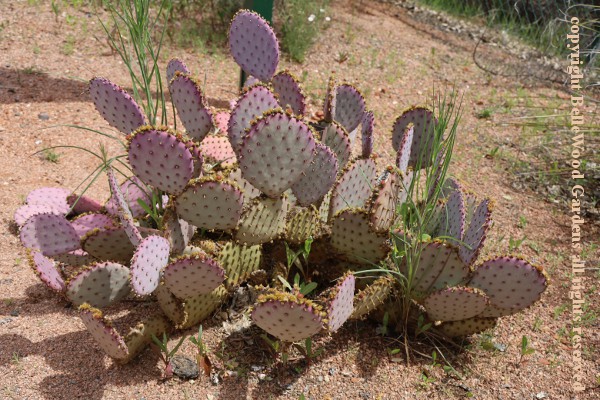
I happened to photograph this Opuntia violacea also at the botanical garden.
No doubt it is the violet color of the pads that make it very popular. It appears
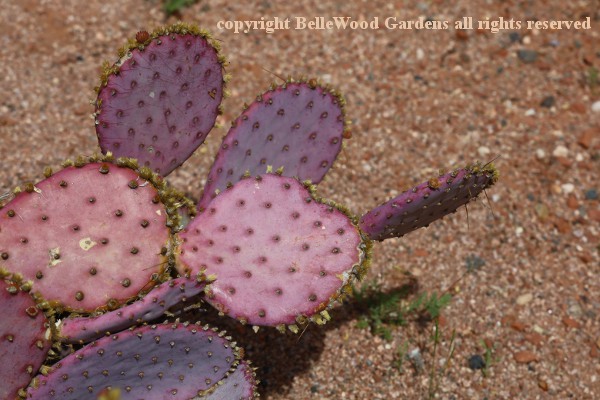
in highway medians, in front of shops, in the sparse plantings that pass for gardens.

Prickly pear are likely the most familiar kind of cactus. I know where some grow wild
in New Jersey, and friends have them in their gardens. This one, as best as I can tell,
is Opuntia chlorotica, pancake prickly pear. 14 April, 2019, at Arcosanti, exit 263 I-17S.
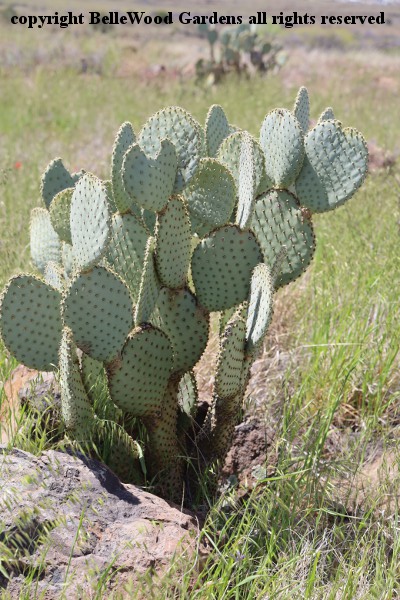
According to the book it grows, for the most part, on bedrock
outcrops and steep, rocky slopes in mountain foothills. Indeed.
Opuntia are edible. Nopalito, the young tender pads, are cooked and eaten as a vegetable.
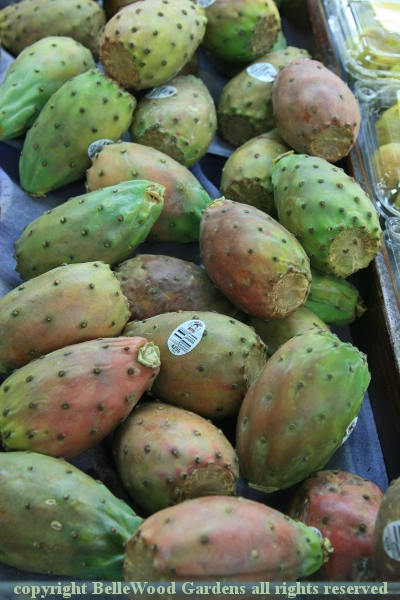
Juicy and edible, it is tuna, the fruit of many cactus species, that is popular.

In fact, at an art festival in Sedona there was a woman selling prickly pear syrup and
preserves. They were blends: prickly pear & peach jam, prickly pear & orange marmalade.
She makes the jam but it is her husband who gathers the prickly pear fruit on their farm.

Serendiptiously, on the way to Jerome we noticed this sign, and stopped
on our way back. But no purchases. Not sure of TSA rules on spiny plants.

Spiny stars, beehives, and pineapples are all common names for Coryphantha,
a genus of low growing spiny cactus. 18 April 2019 at Arizona Botanical Gardens
and Cactus Nursery, located off the road to Jerome in Clarkdale, where clearly

a diversity of cacti are well grown and available for sale and landscape use.

There is even a spear, as unbranched saguaro are named.
It takes 50 years to reach flowering size, 75 years to branching.

Saguaro cannot withstand more than 24 hours of freezing.
This one in Sedona is a mere look-a-like, metallic imitation.
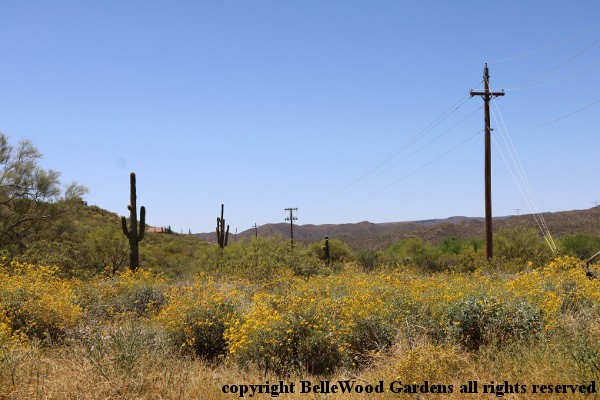
So we're on our way back to Phoenix. And, as promised, my chance
to photograph saguaro is here and now - about 50 miles from Phoenix,
at about 3,000 foot elevation. Don't be mislead by the telephone poles.
I was so excited that I forgot to make a note but think it was exit 244.

The hillsides are occupied by a plentitude of saguaro of all ages and sizes.
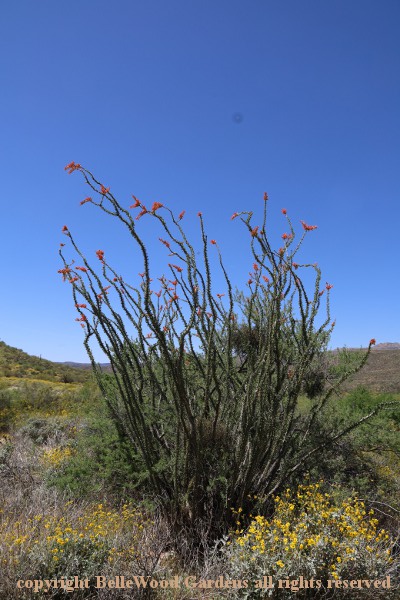
Oh yes, one other plant. But it's not a cactus. It's ocotilo,
Fouquieria splendens, with long, wand-like, woody branches.
Even has thorns. But after good rains there are actual leaves.
Also along the I-17 exit ramp about 50 miles from Phoenix.

And flowers. Tall, striking, and a fitting conclusion
to my pursuit of cacti in and around Sedona, Arizona.